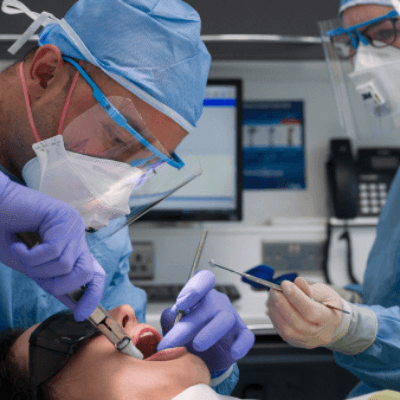These days, maintaining physical distance and following other safety protocols is a must while in public places. Besides crowded areas, some people avoid going out of the house altogether unless it is too important to do so. Similarly, patients wish to spend minimum time at the dental office. However, they do not want to compromise on aesthetics. And this is where CAD/CAM Dentistry comes into the picture.
What’s CAD/CAM?
In 1985, experts at the University of Zurich inserted tiny triangular cameras inside the patient’s mouth for collecting multidimensional images. A computer quickly processed those images with CAD software that controlled a CAM milling machine. And the world’s first highly accurate silicate inlay restorations were created by researchers.
Computer-aided design (CAD) and computer-aided manufacturing (CAM) tech has been around since the 80s. However, the technology is being used only by a small number of dental offices. Now, it is in great demand as patients wish to spend less time at the clinic due to the coronavirus pandemic.
Some dental clinics have advanced CEREC systems in place. It consists of a combination of CAD/CAM solutions that work as a single unit. The combination of CAD and CAM helps dentists in completing complicated dental restoration procedures faster. Digital dental impressions are processed, and restoration elements like dental crowns and bridges, inlays, veneers are manufactured with the help of a milling unit within minutes. The technology offers preciseness and accuracy that other fabrication methods cannot provide.
Here’re some of the most appreciated benefits offered by CAD/CAM Dentistry.
- Durable and long-lasting restorations
Studies have pointed out that CAD/CAM restorations are superior compared to those produced with traditional techniques. Patients always seek long-lasting and durable restorations. Manufacturing deficiencies are considerably reduced due to quality control and minimal human intervention. Design customization and material strength can further enhance the durability of CAD/CAM end products. Plus, as records and measurements are stored digitally, the dental office can refer to the same in case if the fixture needs to be replaced in the future.
- Digital scans for dental impression
Placing impression materials and trays in the patient’s mouth is a thing of the past. Dentists use digital scans as a part of CAD/CAM Dentistry. So, patients do not experience any discomfort. There is no need to keep the mouth in an uncomfortable position while the dentist captures tooth images.
- Dentists can complete the entire procedure in a single visit
Some dentists still prefer to go the old-school way; they use elastic impression material to take dental impressions and send the same to the lab. Traditional impressions based restoration treatments may need two to three weeks for the completion of the procedure. On the other hand, CAD/CAM Dentistry based restoration needs a single visit. The milling unit starts creating restoration as soon as the dentist scans the mouth and areas around affected teeth.
As clinics do not rely upon third-party labs for manufacturing crowns and other restorations, there is no waiting period or temporary restoration involved. From shorter waiting periods to improved accuracy, CAD/CAM technology has made restorative dentistry simple.
- Offers a glimpse into the possible outcome
Restorations produced with CAD/CAM technology offer shades that are close to the patient’s natural teeth color.
One of the most appreciated benefits of CAD/CAM technology is the ability to predict the possible outcome of treatment. Patients can check if they can achieve the desired look after completing the procedure and request changes accordingly. There is no better way for treatment planning and to achieve a great perfection of designs.
- Highest standard of care
Computer-aided manufacturing involves the use of subtractive manufacturing units (milling machines) that fabricate dental restorations out of lithium disilicate, zirconia, and other ceramic materials. No matter if it’s an inlay, onlay, veneers, bridges, crowns, or implant abutments, a computer-aided manufacturing unit can create highly accurate, beautiful restorations. Thanks to these devices, clinicians can even develop their own prosthetic designs at the clinic.
CAD and CAM can do wonders together, but dentists can also choose to use computer-aided design and let an external lab handle fabrication. Several dentists prefer digitally scanning the patient’s mouth for dental measurements and sending them to their lab for manufacturing restorations. Either way, both CAD and CAM help dentists offer the highest standard of care and quickly restore damaged teeth.
Unfortunately, several offices still lack the technology. But, things are changing since the arrival of the COVID-19 crisis. Dentists are upgrading their clinics to offer the best and most effective treatments to their patients.
Patient satisfaction is crucial for a dental office’s success, and single-visit treatment ensures the same. Are you searching for general dentistry in Roswell GA? If so, you should get in touch with TruCare Dentistry to discuss the problems you face. The dental office follows CDC as well as OSHA guidelines for ensuring patient and staff safety during the pandemic situation.

